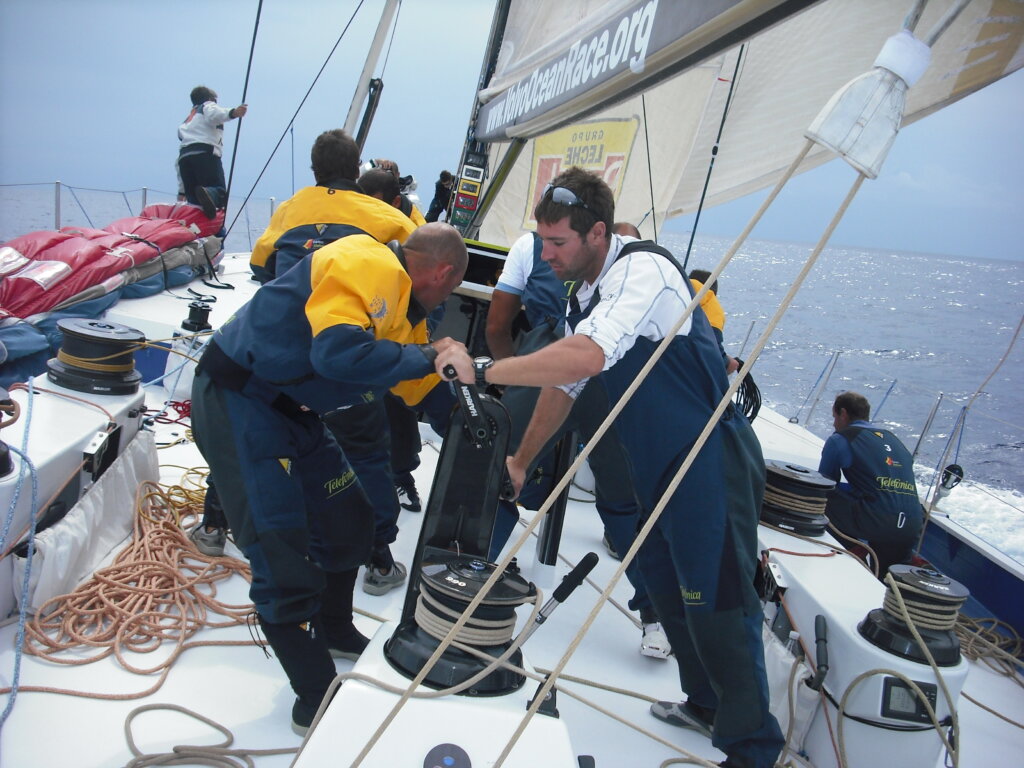
Rund um die Welt: Die Segler der Volvo Ocean Race (heute: The Ocean Race) gehen aufs Ganze + + + Reportage zur Edition 2008/2009 + + + Start #TheOceanRace 2022-23 am 15. Januar in Alicante
(scroll down for ENGLISH)
(Long read ca. 8 min) – Windstärke elf vor Kap Hoorn, Mitternachtswache an Bord. Rings um die Reling der schnittigen Rennjacht türmen sich die Schaumkronen tosender Wellenbrecher zu Schwindel erregender Höhe auf. Weiß gurgelnd brodelt neben dem Boot die Stunden zuvor so friedliche See.
Dunkle Wassermassen schlagen über die Bordwand und rauschen in Lee über die Speigatts ab. Der Orkan heult in den Wanten, pfeift durch die Stage und treibt Gischtschwaden in das Cockpit. Es ist pechschwarze Nacht. Nur das Kompasslicht am Steuer wirft einen schwachen Schein auf das Achterdeck. Über dem Masttop jagen schwarze Wolkenfetzen dahin.
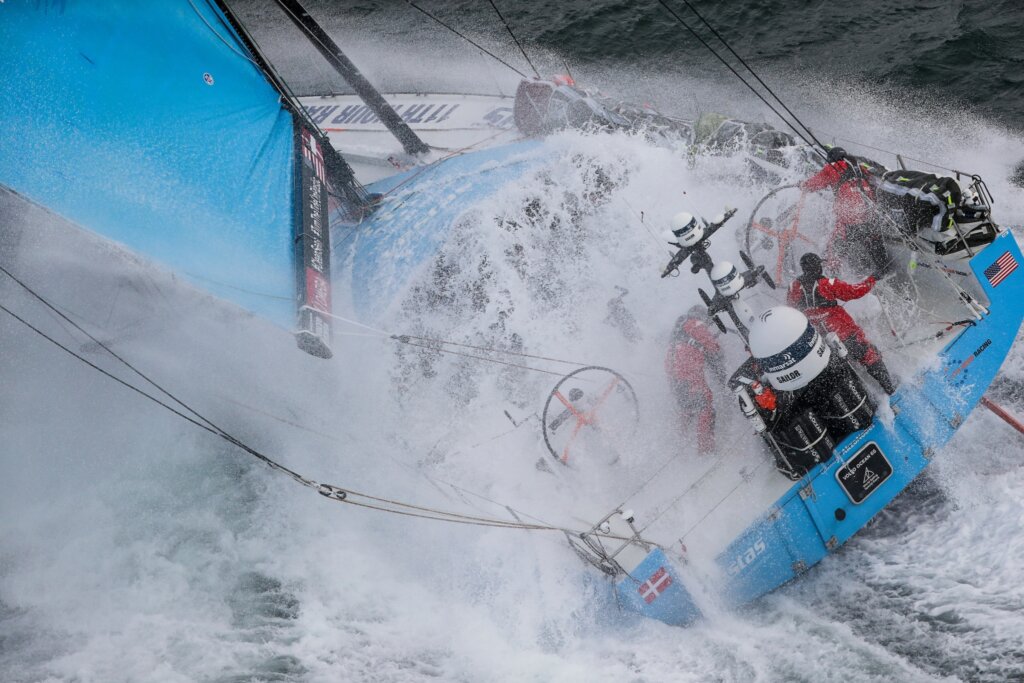
„Well, you see a lot out there!“ – Nun, du siehst eine Menge da draußen… Navigator Simon Fisher, schlicht „Si-Fi“ genannt, kommentiert das Abenteuer seiner letzten Volvo Ocean Race, Kap Hoorn zu umrunden. „Es gibt ein Foto, das die Organisatoren der Regatta vom Flugzeug aus geschossen haben. Da sieht man unser Boot ganz winzig klein inmitten gigantischer Wellen…“
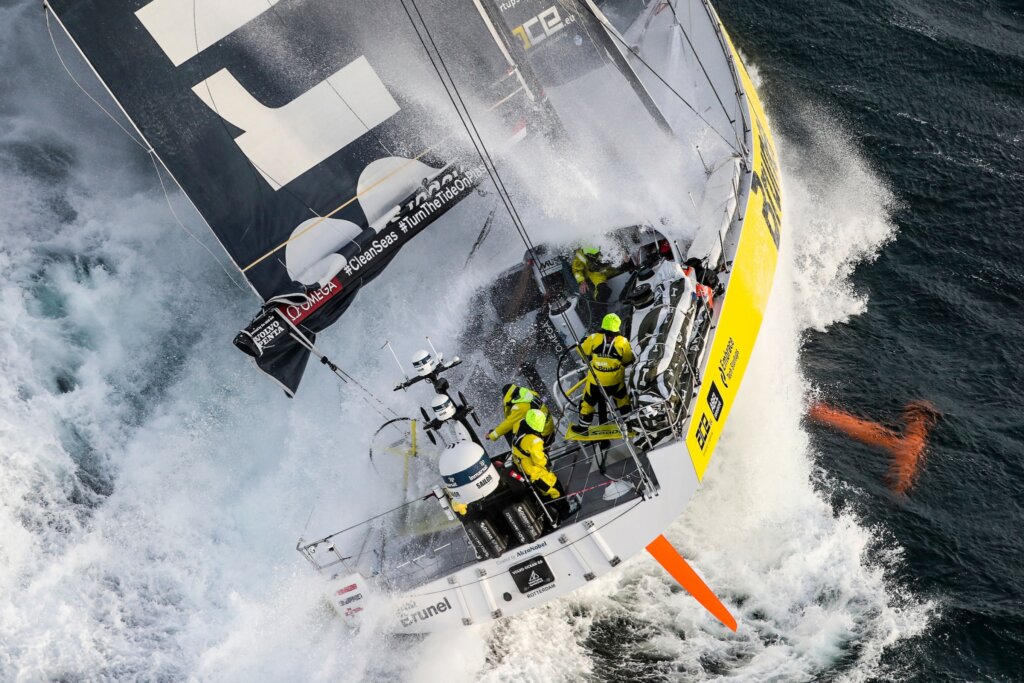
Photo: Ainhoa Sanchez
Wenn der Brite mit Wohnsitz in Barcelona von 30 Meter hohen Brechern erzählt, von gischtenden Raumschots-Kursen mit 42 Knoten Speed inmitten der „Roaring Fifties“ – den grollenden Fünfzigern, wie die äußersten südlichen Breitengrade im Seglerjargon bezeichnet werden –, dann schaudert es einem allein bei der Vorstellung.
Wer einmal die Gewalt hereinwaschender Brecher im Orkan erlebt hat, weiß das Meer zu fürchten. An der grauenvollen Härte dieser entmenschlichten Natur zerschellt jegliche Illusion einer idyllischen Romantik unter Segeln wie ein Schiff, das in der Brandung auf ein Riff läuft.
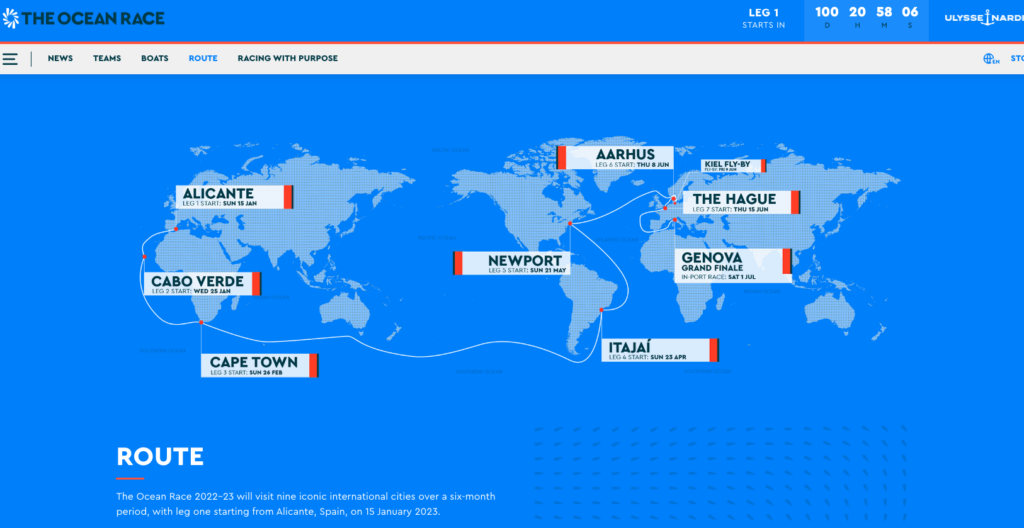
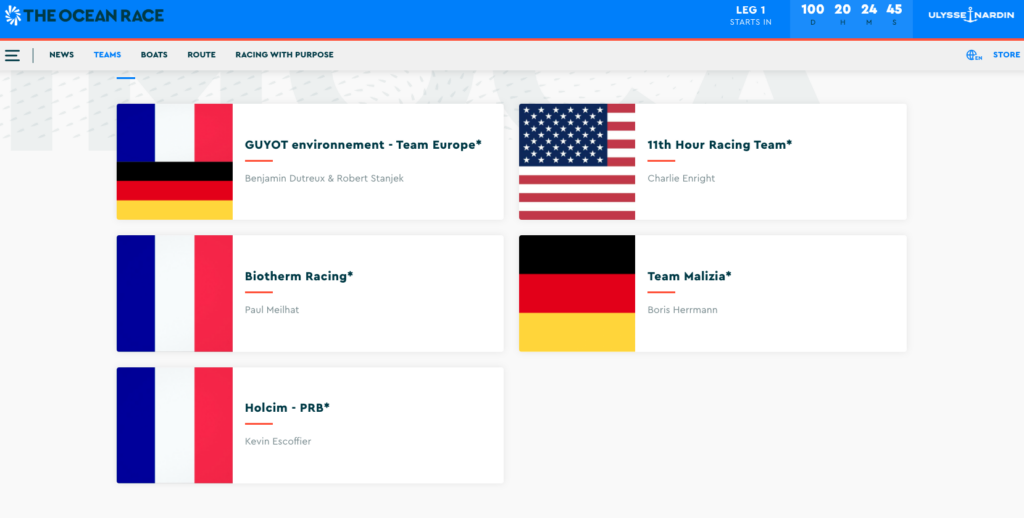
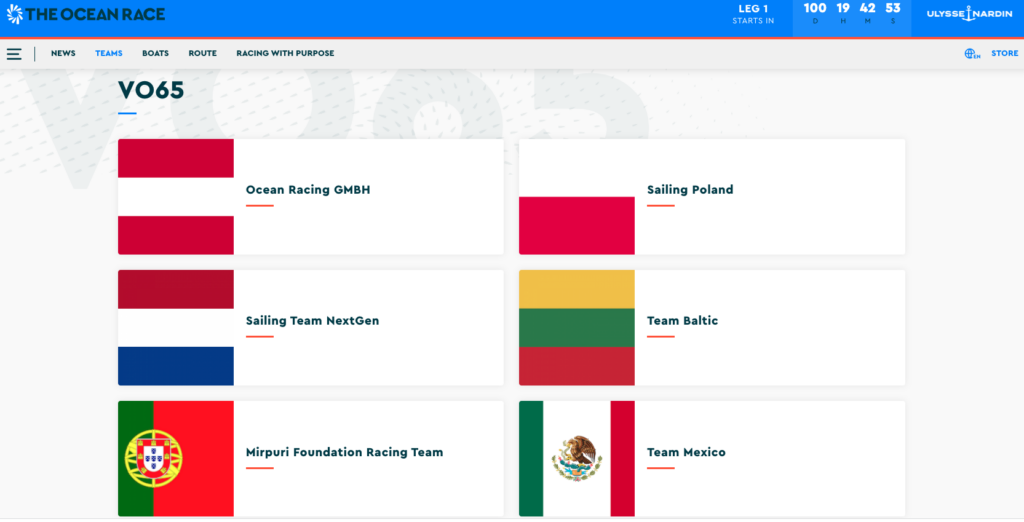
Beim Training der “Telefónica Azul” für die Volvo Ocean Race 2008 in den Küstengewässern von Alicante herrscht entspannte Stimmung an Bord. Fünf Knoten Windstärke aus Südost, ruhige See, leichter Regen: Zwischen den Wolkenbänken schimmert selten ein wenig Himmelsblau durch. Dann zaubert die Sonne glitzernde Reflexe auf die eisgraue, wie in Blei gegossene See. Neben der Rennjacht ziehen zwei Möwen klar gezirkelte schnelle Kreise und streifen mit ihren Flügelspitzen die silbrig funkelnde See.
Die Crew der Telefónica Azul testet vor dem ersten Inshore-Rennen bei Alicante die neuen Segel für ihr Rennen um die Welt. Das Gennaker zum Beispiel, 500 Quadratmeter Tuch. Oder das Spi2, ein bauchiges Spinnaker, das sich vor dem Wind wie ein kolossaler weißer Dom in den Himmel wölbt. Und das Spezialsegel SJS – „Fotografieren verboten!“ Die schnittige Fock, gehisst zwischen Groß und Genua, sieht aus wie die Tragfläche eines Kampfjets und soll den Winddruck auf das Groß verstärken.
Denn jeder Knoten Fahrt zählt. Bei der Volvo Ocean Race holen Schiffe und Crews das Maximum an Speed aus jeder Windstärke heraus. Über Stunden, Tage und Nächte hindurch. Auf zehn entbehrungsreichen Etappen, die zusammen über 57.000 Kilometer lang sind. „It’s very simple“, flachst Si-Fi: „It’s just sleep, eat and sail!“
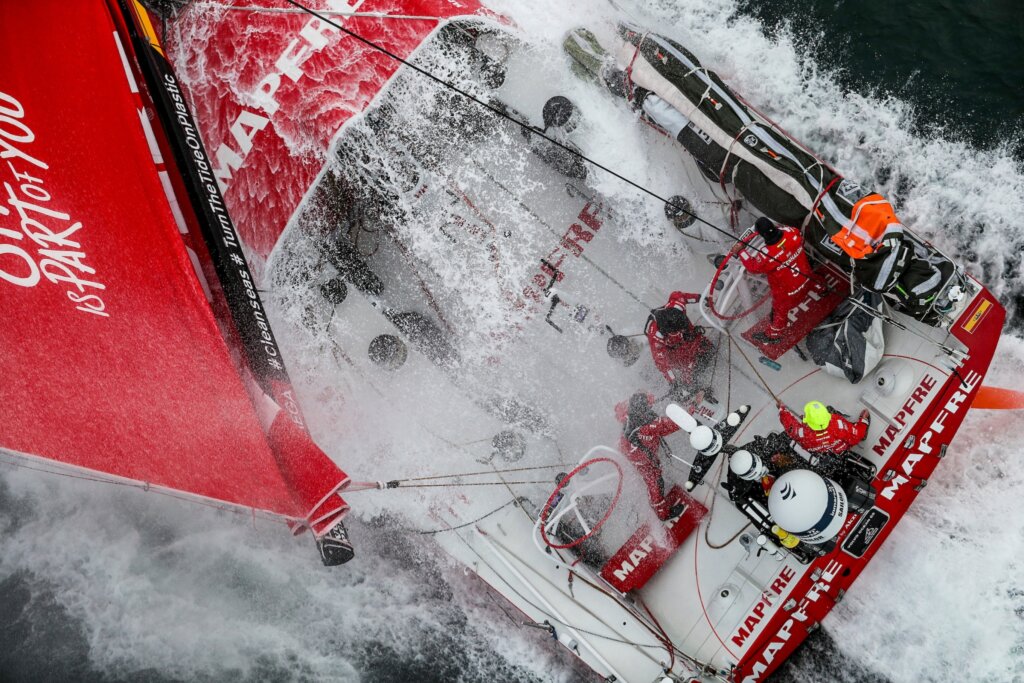
Es sei eigentlich alles ganz einfach – nämlich schlafen, essen, segeln… Simon Fisher lebt wie seine Teamkameraden für den Segelsport. Ob die Victory Challenge, die Rolex Fasnet Race oder jetzt zum zweiten Mal die Volvo Ocean Race – der Profi-Segler hat als Navigator alle großen Offshore-Regatten auf den Ozeanen der Erde abgewettert. Immer dabei: sein „Toughbook“ von Panasonic. Auf dem wasserdichten Notebook hat er Tausende von nautischen Daten abgespeichert, die ihm helfen, für sein Schiff den besten Kurs zu errechnen – jeweils vier Tage im Voraus.
Für Geld setzt Simon sein Leben nicht aufs Spiel. Obwohl die Elite der weltbesten Profi-Segler – keine 200 Männer und Frauen weltweit – gewiss nicht am Hungertuch nagen muss. „Für die Heuer einer einzigen Ocean Race müsste ich ein ganzes Jahr lang jeden Monat zwei bedeutende Regatten segeln“, sagt er. Da müssten noch die Kosten für Transatlantikflüge und Hotels vor Ort abgezogen werden, die bei solchen seglerischen Marathons auf Routen zwischen Kapstadt, Sydney, Wellington und Miami anfallen.
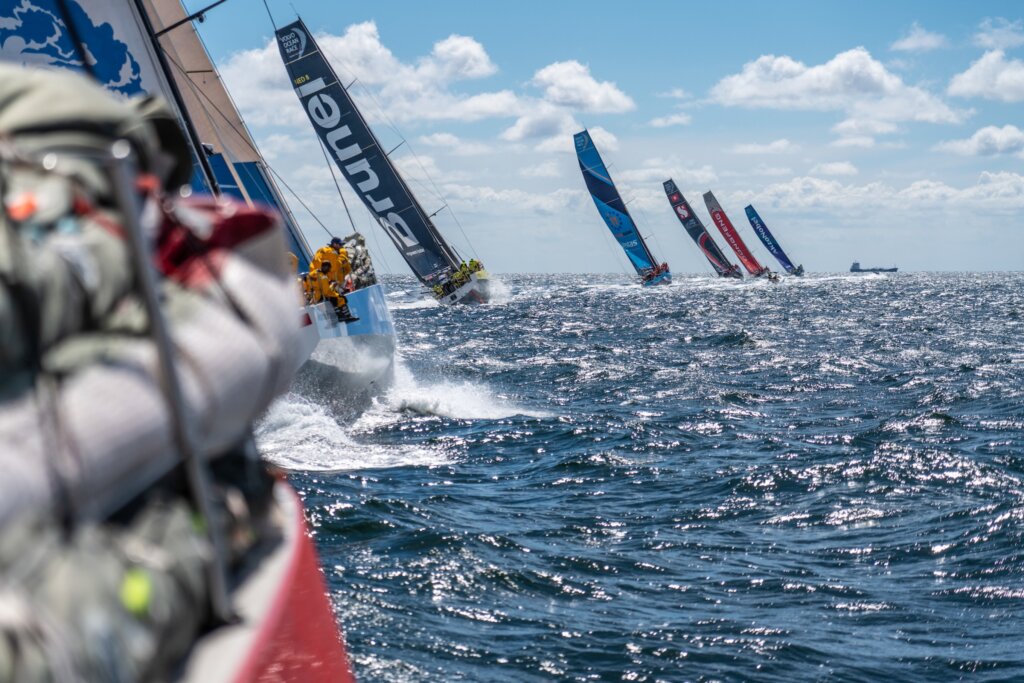
Die Crew an Bord der Telefónica Azul besteht aus zehn mit allen Wassern gewaschenen Regatta-Seglern. Da ist zum Beispiel Bouwe Bekking. Der Holländer und technische Leiter des Equipo Telefónica segelt dieses Jahr zum fünften Mal die Volvo Ocean Race. 750.000 Meilen auf allen Ozeanen hat der Kerl im Kreuz, rund 30 Mal um die ganze Welt.
Seine sportlichen Erfolge gelten auch unter Profi-Seglern als Mythos: Gold beim America’s Cup 1999, drei Mal Gold beim Rolex Sardinia Cup, zweiter Platz bei der Volvo Ocean Race letztes Jahr. „Heuer wollen wir beide spanischen Jachten aufs Podium bringen“, definiert der Mann mit den stahlblauen klaren Augen sein ehrgeiziges Ziel.
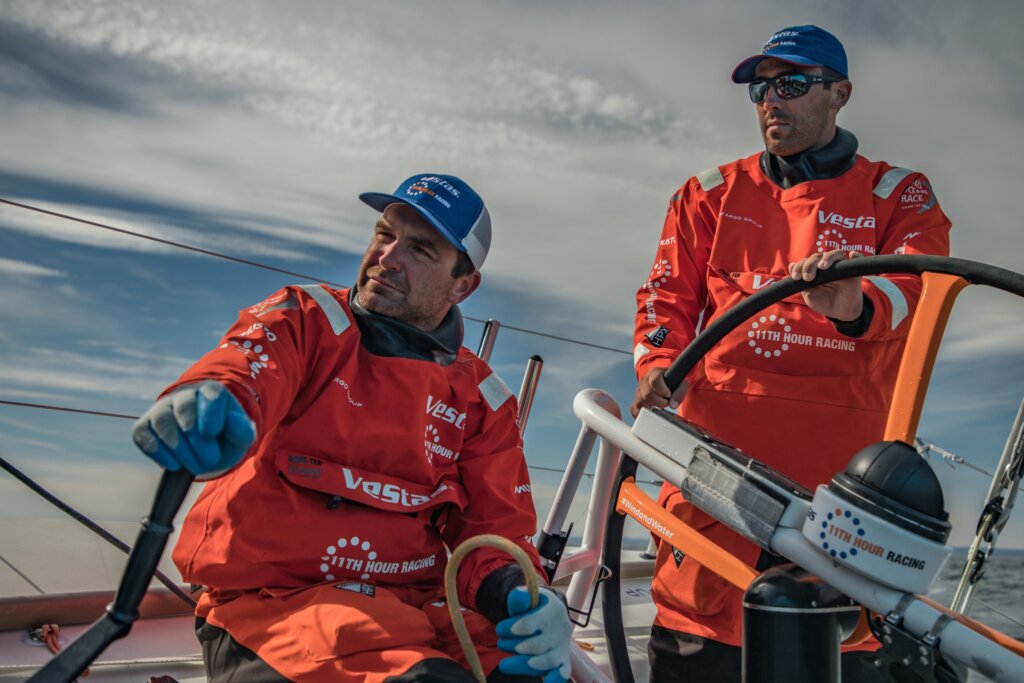
Da ist Iker Martínez. Der Spanier aus Hondarribia hat bei den Olympischen Spielen Gold in Athen 2004 im 49-er ersegelt und in Peking Gold im Tornado. „Es ging alles ganz plötzlich“, sagt der Segler, „gerade war ich noch in Peking, dann musste ich ruck, zuck nach Alicante zurück zum Start der Volvo Ocean.“ Stolz ist Iker auf seinen Geschwindigkeits-Weltrekord: 520 Meilen in 24 Stunden mit im Durchschnitt 22 Knoten Speed. Sein Fazit? „Ein Höllenritt!“
Und da ist Pedro Campos. Der Leiter des Equipo Telefónica hat 22 Titel beim America’s Cup ersegelt und ist einer der besten spanischen Regatta-Segler. Die Crew der Telefónica Azul komplettieren Xabier Fernández und Jordi Calafat. Die Wachführer Laurent Pages aus Frankreich und der Südafrikaner Jonathan Swain, beide seit Jahrzehnten auf Maxi-Races zu Hause, mehr auf dem Wasser als an Land. Pepe Ribes als Bowman, der Mann am Bug, zusammen mit Daryl Wisman. Last not least: Gabriele Olivo, der einzige Italiener unter den Crews der acht Rennjachten, die an der VOR 2008 teilnahmen.
Es ist 14 Uhr. Seit zwei Stunden segeln wir erst hart am Wind, dann mit halbem Wind und wieder ein paar Meilen vor dem Wind vor der Küste zwischen Alicante und Santa Pola hin und her. Die Telefónica Azul macht satte zwölf Knoten Fahrt bei nur sechs Knoten Wind. Wie ein rassiges Rennpferd beschleunigt die schnittige 70-Fuß-Jacht, wenn wieder eine Böe leicht die Wellen kräuselt.
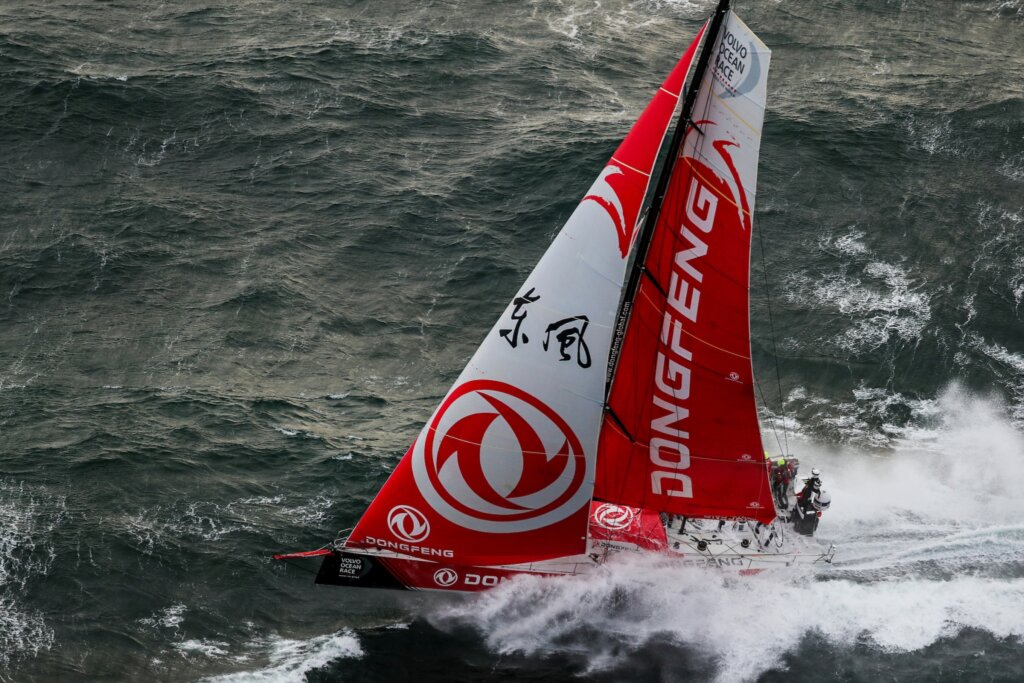
Photo: Ainhoa Sanchez
Zwölf Segel hat das Schiff an Bord. Ein Wechsel des Vorsegels spielt die Crew alle 30 Minuten durch. Die Manöver der eingespielten Crew funktionieren wie am Schnürchen: Segelsack öffnen, Segel anschlagen, sechs Mann gehen an die Grinder im Cockpit und kurbeln, was die Bizeps hergeben. Das nächste Segel bläht sich im Wind, keine 20 Sekunden sind vergangen.
Keine Hektik, kein Stress. Jeder Handgriff sitzt. Spielerisch wie Tänzer beim Ballett meistern die Segler Halsen und Wenden, das Setzen des Spinnakers, den Wechsel der Segel. „Wir wollen die Tücher in verschiedenen Windrichtungen auf allen Kursen erproben“, erklärt Iker Martínez denn Zweck und Nutzen dieses letzten Testlaufs vor dem Start der Race.
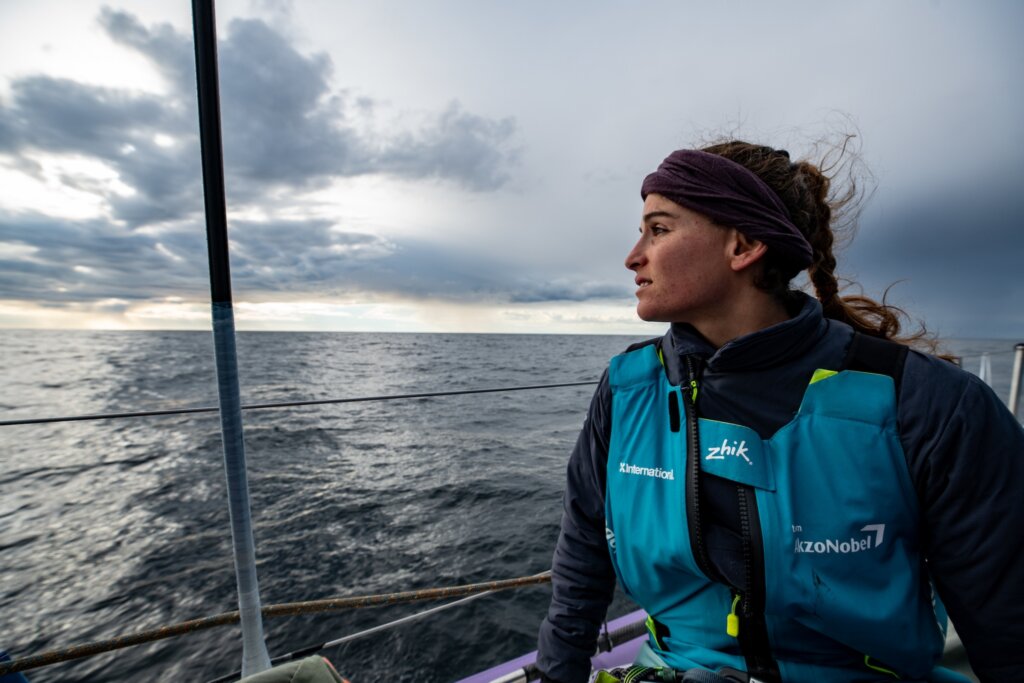
Keine Falte, kein killendes Achterliek – die Segel sind Hightech-Produkte der Firma North Sails, exklusiv aus Kohle-Kevlar angefertigt nach Entwürfen des Segelmachers vom Team Telefónica. Unter vollem Tuch vor dem Wind kommt die Telefónica Azul auf satte 675 Quadratmeter Segelfläche. Allein das Großsegel misst 175 Quadratmeter, die Genua bringt es auf eine Fläche von 185 Quadratmetern, das Gennaker misst 500. Selbst bei Flauten in tropischen Breiten nahe dem Äquator, konstatiert Bekking, wird die Rennjacht „lässig auf vier bis sechs Knoten“ Fahrt auflaufen. „Für uns gibt es auf dem Meer keinen Stillstand!“
Wenn am Samstag, 11. Oktober, um Punkt 14 Uhr der Startschuss für die Volvo Ocean Race 2008 fällt – nach der Segnung der Flotte und dem Vorabendkonzert von UB40 im Village –, wenn eine ganze Armada kleiner und großer Begleitboote die Flotte der Rennjachten ein Stück weit südlich hinaus ins Mittelmeer gen Cabo de Palos begleitet hat, wenn der ganze Medienrummel am Kai vorbei st und die VIP-Gäste ihren letzten Campari-Orange oder ein Gläschen Champagner in den cool designten Lounges der Teams Puma, Volvo oder Ericsson zu sich genommen haben, dann wird die spartanisch eingerichtete Rennjacht aus Polyester, Karbonfaser und Stahl in der Weite der Ozeane Heim, Welt und gegebenenfalls Leichenkiste für zehn unsterbliche Menschenseelen. Dann ist der Traum vorbei, und der Alltag an Bord hat begonnen. „Schlafentzug“, sagt Pepe Ribes, gebürtig aus Benissa, „das ist die härteste Strapaze auf allen Etappen um die Erde!“ Länger als drei Stunden lang könne sich keiner in die Koje hauen. Und wenn der Kurs aufgrund von Wind und Wetter geändert werden muss, werde „die Schlafphase noch verkürzt, weil die Freiwache auf Luv wechseln müsse.
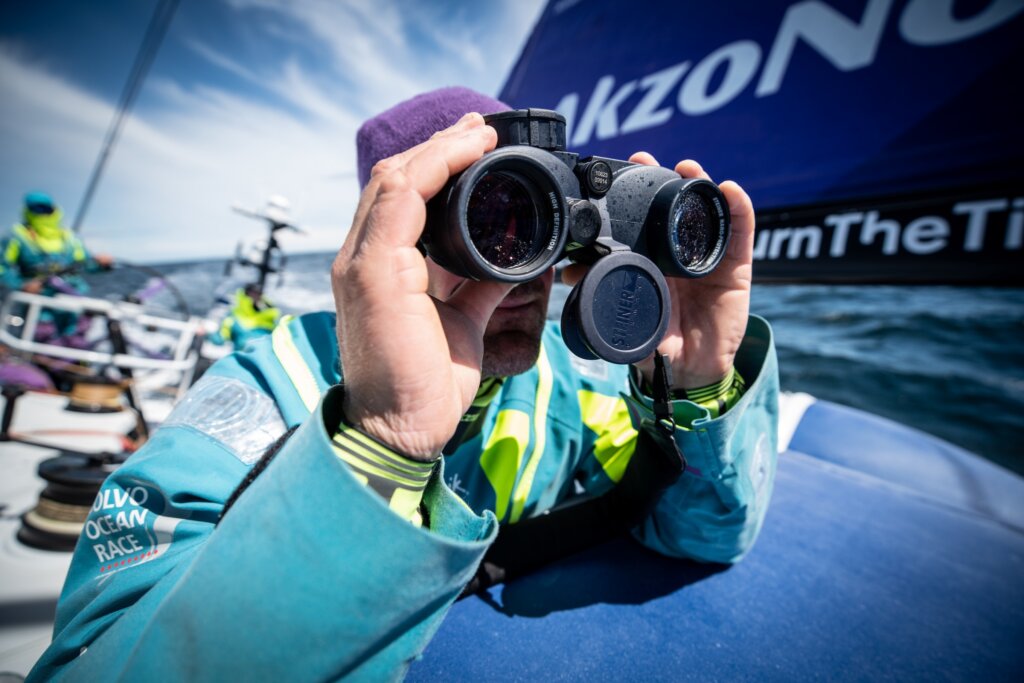
Zu essen kriegen die Segler Astronautenkost: dehydriertes „Thai Chicken“ und „Mashed Potato“ aus der Tüte, aufgekocht mit heißem Wasser. Dazu zwei proteinhaltige Snacks pro Tag, jeder einzeln abgezählt. Denn jedes überflüssige Kilo an Bord wird eingespart. Die Vorräte sind für alle Etappen exakt bemessen – Kapstadt, Cochin, Singapur, Qingdao, Rio de Janeiro, Boston, Galway, Göteborg, Stockholm und Sankt Petersburg.
„5.600 Kilokalorien am Tag nehme ich zu mir“, sagt Pepe aus Benissa, „an Land komme ich mit der Hälfte aus.“ Er weiß, dass er auf dem Törn nach Kapstadt wieder viele Kilo abnehmen wird. Wegen der Kälte auf dem Atlantik. Der schweißtreibenden Arbeit an den Winschen. Der ständigen Bewegung. Es ist ein harter Alltag an Bord, den nur die Hartgesottensten meistern wie moderne Gladiatoren. Ihr Spektakel findet nicht in der Arena statt, sondern auf dem Ozean. Doch wie in der Antike gilt ihr Kampf auch dem Ruhm und der Unterhaltung. Dem Image der Sponsoren. Der Unterhaltung eines Publikums in aller Welt – online als Life-Stream im Internet oder übertragen via Breitbandsignal auf die Bildschirme der Welt.
Das Leitmotiv von The OCEAN RACE? Der ultimative Team Test, ein einzigartiges menschliches Abenteuer…
Zur Homepage von “The Ocean Race 2022-23”
ENGLISH
Gladiators of the oceans
Hard work on the water: the professional sailors of The Ocean Race + + + Reportage about edition 2008/2009 + + + Start of #TheOceanRace 2022-23 on 15th of january in Alicante
Wind force eleven off Cape Horn, midnight watch on board. Around the railing of the sleek racing yacht, the whitecaps of roaring breakwaters tower to dizzying heights. The sea, which had been so peaceful just a few hours before, gurgles white beside the boat.
Dark masses of water slam over the ship’s side and rush downwind over the scuppers. The hurricane howls in the shrouds, whistles through the stage and drives swaths of spray into the cockpit.
It is pitch black night. Only the compass light at the helm casts a faint glow on the aft deck. Wisps of black clouds chase over the masthead.
“Well, you see a lot out there!” – Well, you see a lot out there…. Navigator Simon Fisher, known simply as “Si-Fi,” comments on his recent Volvo Ocean Race adventure to round Cape Horn. “There’s a photo that the race organizers took from the plane. There you can see our boat very tiny in the middle of gi- gant waves…”
When the Briton, who lives in Barcelona, tells of 30-meter-high breakers, of hissing space-sheet courses at 42 knots of speed in the midst of the “Roaring Fifties” – the rumbling fifties, as the extreme southern latitudes are known in sailing jargon – one shudders at the mere idea.
Anyone who has ever experienced the violence of breakers washing in during a hurricane knows to fear the sea. The cruel harshness of this dehumanized nature shatters any illusion of idyllic romance under sail like a ship running into a reef in the surf.
As Telefónica Azul trains for the Volvo Ocean Race 2008 (VOR) in the coastal waters of Alicante, the mood on board is relaxed. Five knots of wind from the southeast, calm seas, light rain: A little sky blue rarely shimmers through between the cloud banks. Then the sun conjures up glittering reflections on the ice-gray sea, as if cast in lead. Next to the racing yacht, two seagulls make clearly circled, fast circles, their wingtips brushing the silvery, sparkling sea.
The crew of the Azul is testing the new sails for their race around the world before the first inshore race near Alicante. The gennaker, for example, 500 square meters of carbon fiber fabric. Or the Spi2, a bulbous spinnaker that arches into the sky downwind like a colossal white dome. And the special SJS sail – “No photography allowed!” The sleek jib, hoisted between the main and genoa, looks like the wing of a fighter jet and is designed to increase wind pressure on the main.
After all, every knot of speed counts. In the Volvo Ocean Race, ships and crews get the maximum speed out of every wind force. For hours, days and nights. On ten privation-filled legs that together cover more than 57,000 kilometers. “It’s very simple,” Si-Fi quips, “It’s just sleep, eat and sail!”
It’s actually all very simple – namely, sleep, eat, sail…. Like his teammates, Simon Fisher lives for sailing. Whether it’s the Victory Challenge, the Rolex Fasnet Race or now, for the second time, the Volvo Ocean Race – as a navigator, the professional sailor has weathered all the major offshore regattas on the world’s oceans. Always with him: his “Toughbook” from Panasonic. On the waterproof notebook, he has stored thousands of nautical data that help him calculate the best course for his ship – four days in advance.
Simon won’t risk his life for money. Although the elite of the world’s best professional sailors – not 200 men worldwide – are certainly not starving. “For the wages of a single Ocean Race, I would have to sail two major regattas every month for a whole year,” he says. Then there would be the cost of transatlantic flights and local hotels, which are incurred in such sailing marathons on routes between Cape Town, Sydney, Wellington and Miami.
The crew on board the Telefónica Azul consists of ten experienced regatta sailors. There is Bouwe Bekking, for example. The Dutchman and technical director of Equipo Telefónica is sailing the Volvo Ocean Race for the fifth time this year. The guy has 750,000 miles on all oceans in his cross, around 30 times around the world.
His sporting successes are considered a myth even among professional sailors: gold in the America’s Cup in 1999, three times gold in the Rolex Sardinia Cup, second place in the Volvo Ocean Race last year. “This year we want to get both Spanish yachts on the podium,” the man with the steel-blue clear eyes defines his ambitious goal.
There is Iker Martínez. The Spaniard from Hondarribia won gold in the 49-man at the 2004 Olympic Games in Athens and gold in the Tornado in Beijing. “It all happened very suddenly,” says the sailor, “just now I was in Beijing, then I had to return to Alicante in a jiffy for the start of the Volvo Ocean.” Iker is proud of his world speed record: 520 miles in 24 hours at an average speed of 22 knots. His conclusion? “A hell of a ride!”
And there’s Pedro Campos. The leader of Equipo Telefónica has sailed to 22 America’s Cup titles and is one of Spain’s best regatta sailors. Completing the crew of Telefónica Azul are Xabier Fernández and Jordi Calafat. Watch leaders Laurent Pages from France and South African Jonathan Swain, both at home on maxi races for decades, more on the water than on land. Pepe Ribes as Bowman, the man at the bow, together with Daryl Wisman. Last but not least, Gabriele Olivo, the only Italian among the crews of the eight racing yachts that participated in the VOR 2008.
It’s 2 pm. For two hours we have been sailing back and forth off the coast between Alicante and Santa Pola, first hard on the wind, then with half the wind and again a few miles downwind. The Telefónica Azul is making a full twelve knots of speed with only six knots of wind. The sleek 70-foot yacht accelerates like a racy racehorse when another gust gently ruffles the waves.
The ship has twelve sails on board. The crew plays through a change of headsail every 30 minutes. The maneuvers of the well-rehearsed crew work like clockwork: open the sail bag, hoist the sails, six men go to the grinders in the cockpit and crank their biceps. The next sail inflates in the wind, and not even 20 seconds have passed.
No hectic, no stress. Every move is perfect. Playfully, like dancers in a ballet, the sailors master jibes and tacks, setting the spinnaker, changing sails. “We want to test the cloths in different wind directions on all courses,” says Iker Martínez, explaining the purpose and benefit of this last test run before the start of the race.
No crease, no killing leech – the sails are high-tech products of the company North Sails, exclusively made of carbon Kevlar according to designs of the sailmaker from Team Telefónica. Under full sail before the wind, the Telefónica Azul has a full 675 square meters of sail area. The mainsail alone measures 175 square meters, the genoa has a surface area of 185 square meters, and the gennaker measures 500. Even in lulls in tropical latitudes near the equator, Bekking states, the racing yacht will “casually pick up speed to four to six knots.” “For us, there is no standing still at sea!”
When on Saturday, 11. October, at 2 p.m. sharp, the starting signal is given for the Volvo Ocean Race 2008 – after the blessing of the fleet and the pre-evening concert by UB40 in the Vil- lage – when a whole armada of small and large escort boats has accompanied the fleet of racing yachts a little way south out into the Mediterranean towards Cabo de Palos, when all the media hype on the quay is over and the VIP guests have had their last Campari orange or a glass of champagne in the cool lounges of the Puma, Volvo or Ericsson teams, then the spartanly furnished racing yacht made of polyester, carbon fiber and steel will become home, world and, if necessary, body box for ten immortal human souls in the vastness of the oceans. Then the dream is over, and everyday life on board has begun. “Sleep deprivation,” says Pepe Ribes, a native of Benissa, “that’s the hardest punishment of all the legs around the world!” For longer than three hours, he says, no one can hit the sack.
And if the course has to be changed due to wind and weather, “the sleep phase is shortened even more, because the free watch has to change to windward.
The sailors get astronaut food to eat: dehydrated “Thai Chicken” and “Mashed Potato” from a bag, boiled up with hot water. Plus two protein snacks a day, each counted individually. Because every superfluous kilo on board is saved. The supplies are precisely measured for all legs – Cape Town, Cochin, Singapore, Qingdao, Rio de Janeiro, Boston, Galway, Gothenburg, Stockholm and St. Petersburg.
“I eat 5,600 kilocalories a day,” says Pepe from Benissa, “I can get by on half that on land.” He knows he will lose many kilos again on the cruise to Cape Town. Because of the cold on the Atlantic. The sweaty work on the winches. The constant movement. It’s a tough daily routine on board that only the most hardened can master like modern gladiators. The leitmotif of The OCEAN RACE? The ultimate team test, a unique human adventure…
Über den Autor
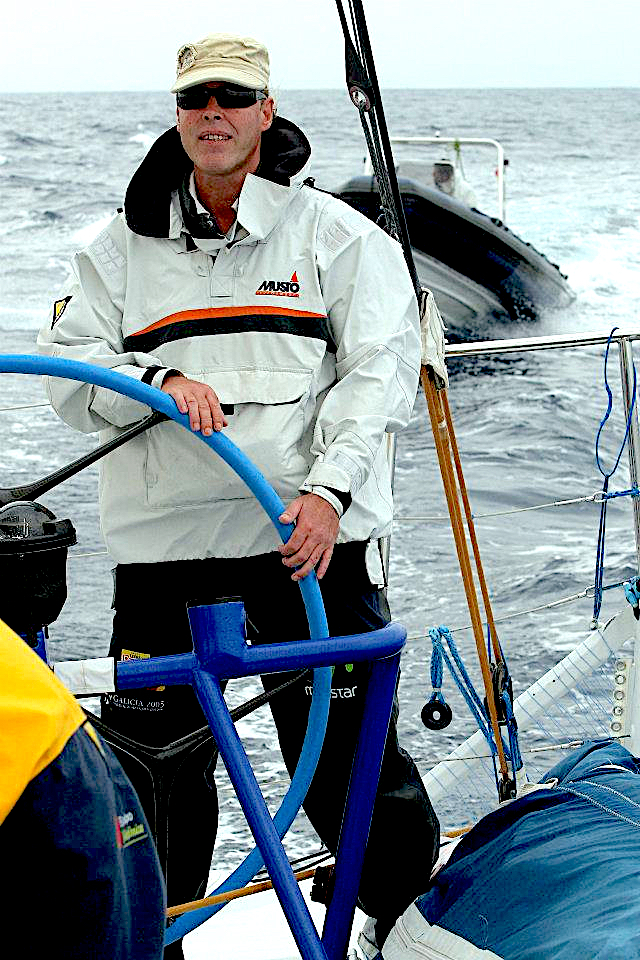
Photo: Ángel García
Michael Allhoff (Jg. 1964) startete Regatta-Segeln in seiner Jugend in der Jollenklasse “Flying Junior”. Das regnerische Wetter in Deutschland trieb ihn auf´s weite Meer – mit dem historischen Gaffelschoner “SY Our Svanen” 3.200 Seemeilen über den südlichen Atlantik von Rio de Janeiro (Brasilien) nach Cape Town (Südafrika), mit der Ketch SY Regina Maris von Buenos Aires gen Kap Hoorn oder mit einem Katamaran in den Cayos de Cuba oder an der Costa Smeralda vor Sardinien. Heute lebt der Journalist, Autor und Bootseigner in Torrevieja (Provinz Alicante, Spanien), segelt Hochsee-Regatten vor der Costa Blanca und teilt seine Passion für´s Segeln in Ausbildungen (Theorie & Praxis) für internationale Segelscheine.

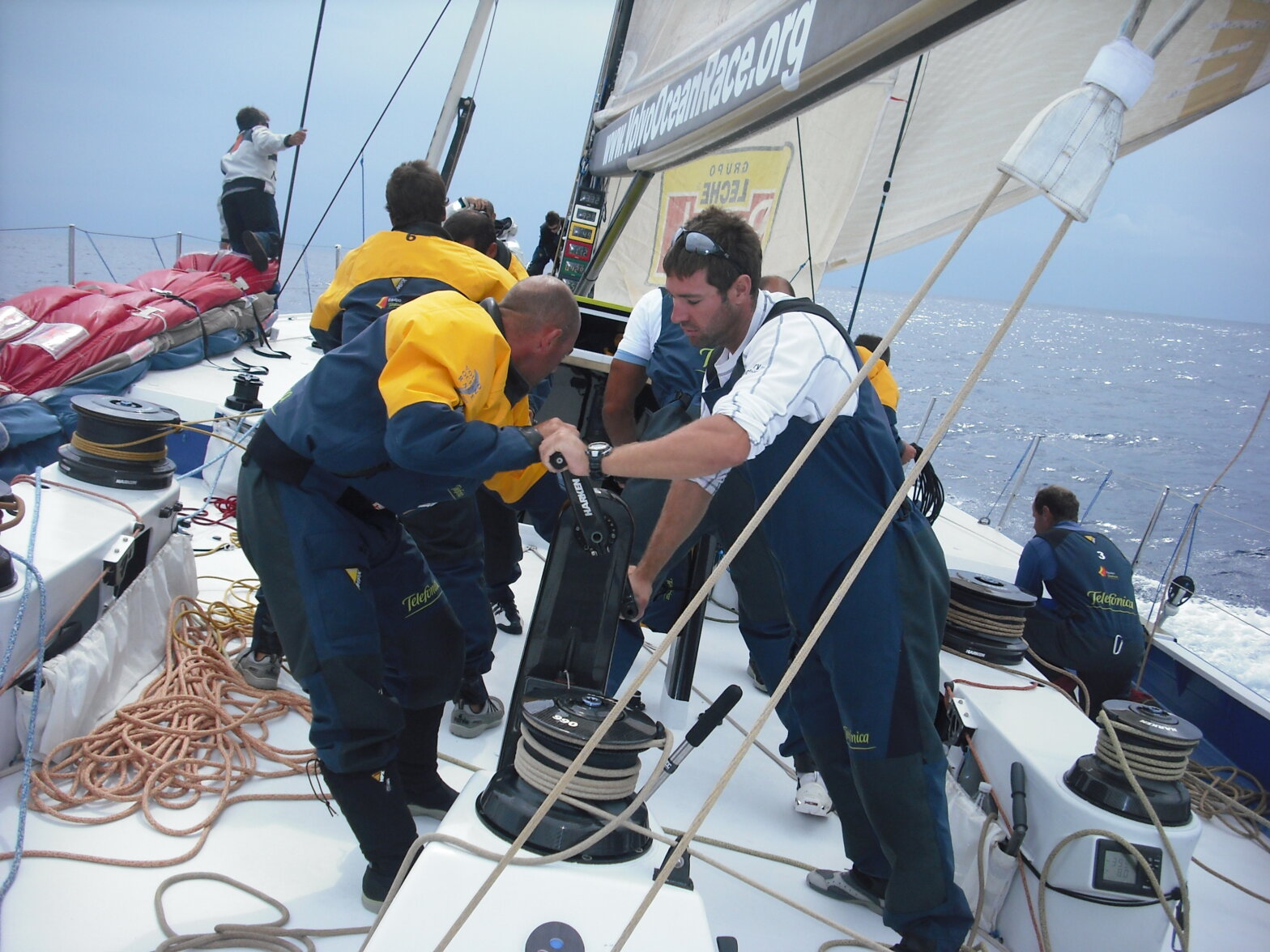
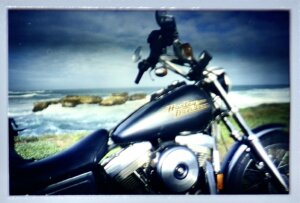
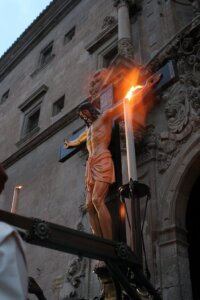

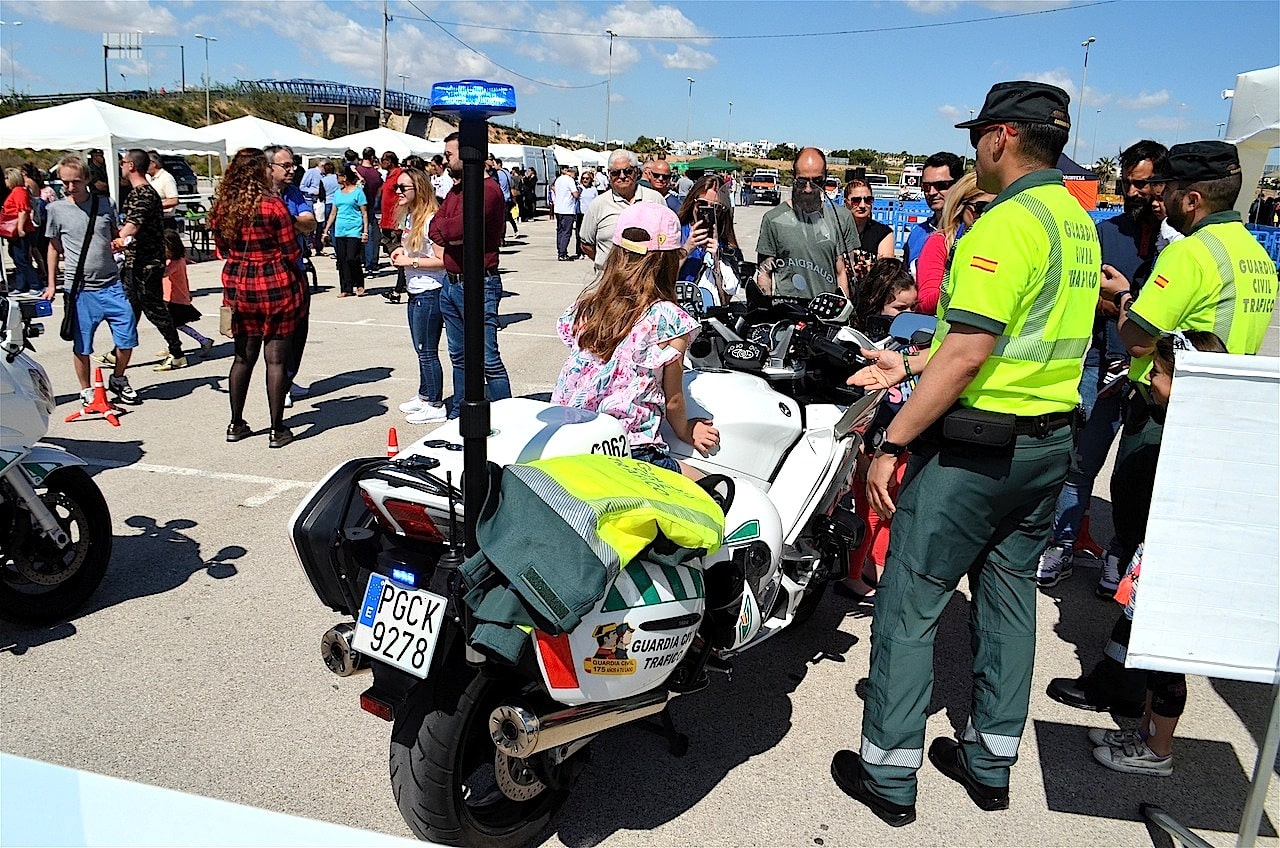
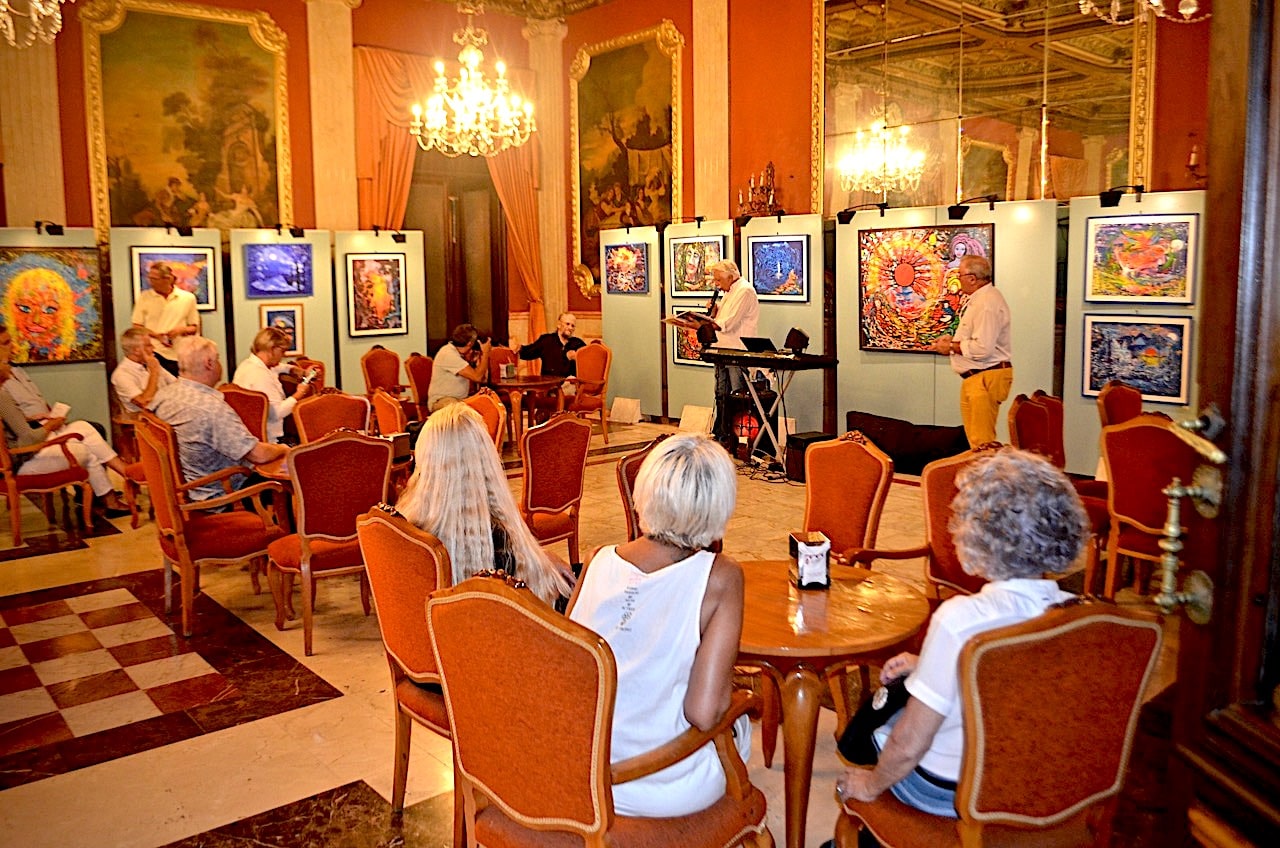
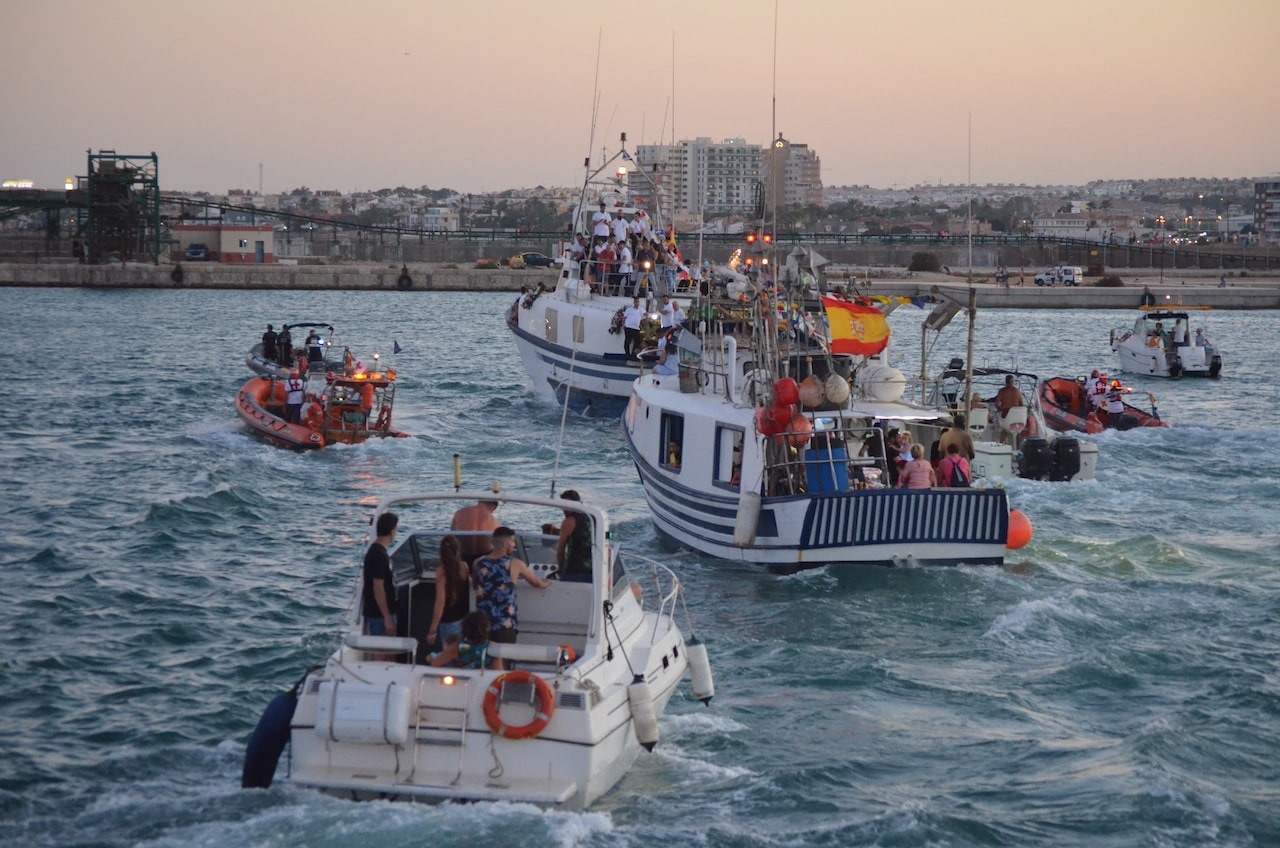

Best of luck!